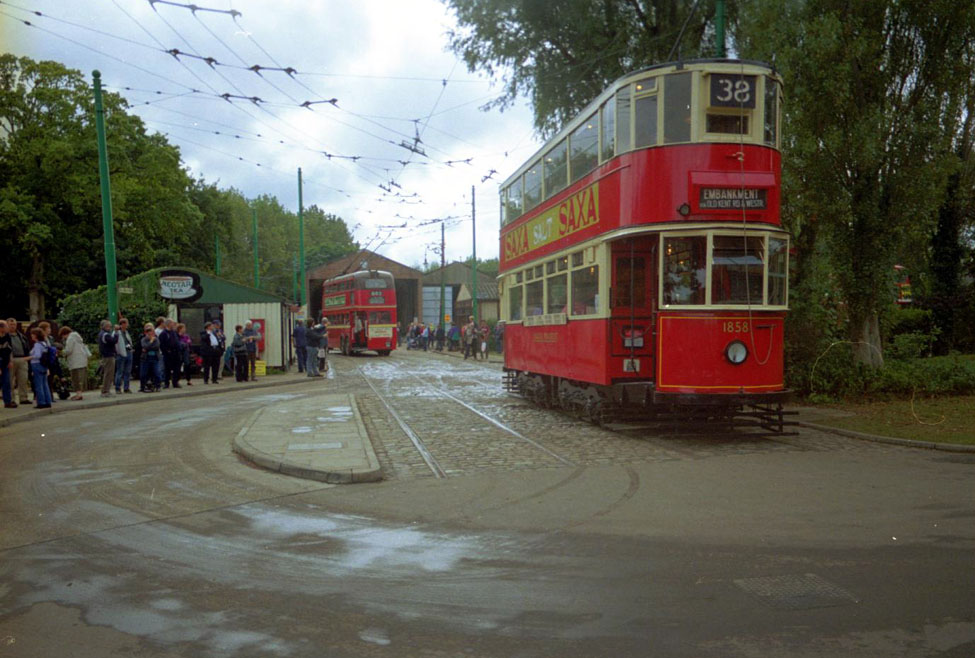
London Tram #1858 - Its Journey into Preservation
 |
| Click on picture [PSG12A] for an enlarged version |
Notes by David Bradley
Tramcar 1858 was chosen for preservation by Peter Davies as it represented a typical example of trams
that ran through London's streets from 1930 onwards. This type of tram help for many people memories of crowded
journeys to and from work; leisurely trips on a 1/- all day ticket; conductors whistles from the top deck; the familiar
clang on the warning gong to clear the track ahead .........
1858 was built in 1930 for the LCC to run on the hilly routes through the Dulwich area; the electromagnetic brakes
being especially fitted to cope with the steep Dog Kennel Hill. Apart from the fitting of windscreens in 1939 the tram
remained practically unaltered throughout its working life. It normally operated on routes 56, 58, 60, 62 and 84 from
Camberwell Depot but when the Dulwich routes were abandoned, 1858, was transferred to New Cross Depot. Its last working
day, in July 1952, was spent on routes 46 and 72.
London's last trams were scrapped at Penhall Road and 1858 was also to be found there following the final abandonment of the
remaining tram routes on 5 July 1952. Its reprieve made history during September 1952 by emerging from Penhall Road under its
own power and standing in Woolwich Road for a few moments with all its lights blazing. It was then towed to Charlton
Works for loading onto a transporter for its journey onto Chessington Zoo. There it was carefully installed on 30ft of
tram track that had been previously recovered from the Norbury area. It was not long before its lights were blazing
once again, but this time from the local electricity supply.
The tram was used over the ensuing years for many enthusiasts' meetings.
During 1964 the area taken by the tram was to be redeveloped by the Zoo and so a new home for 1858 had to be found. Several sites were considered, among these being:
Finding a new site was therefore not a problem but raising £250 to transport the tram to its new home, and contributing a further £200 for covered accommodation considered necessary, was a major headache for all concerned. The small '0' Gauge Group of the Tramway and Light Railway Society arranged for the printing of appeal leaflets and distributed these to many transport related societies for inclusion with their monthly newsletters or magazines sent to members. A sustained letter writing campaign to all periodicals and newspapers was carried out and many publications carried the story. National newspapers published brief details which are reproduced below:
 |
 |
 |
Click on each news item for a larger image